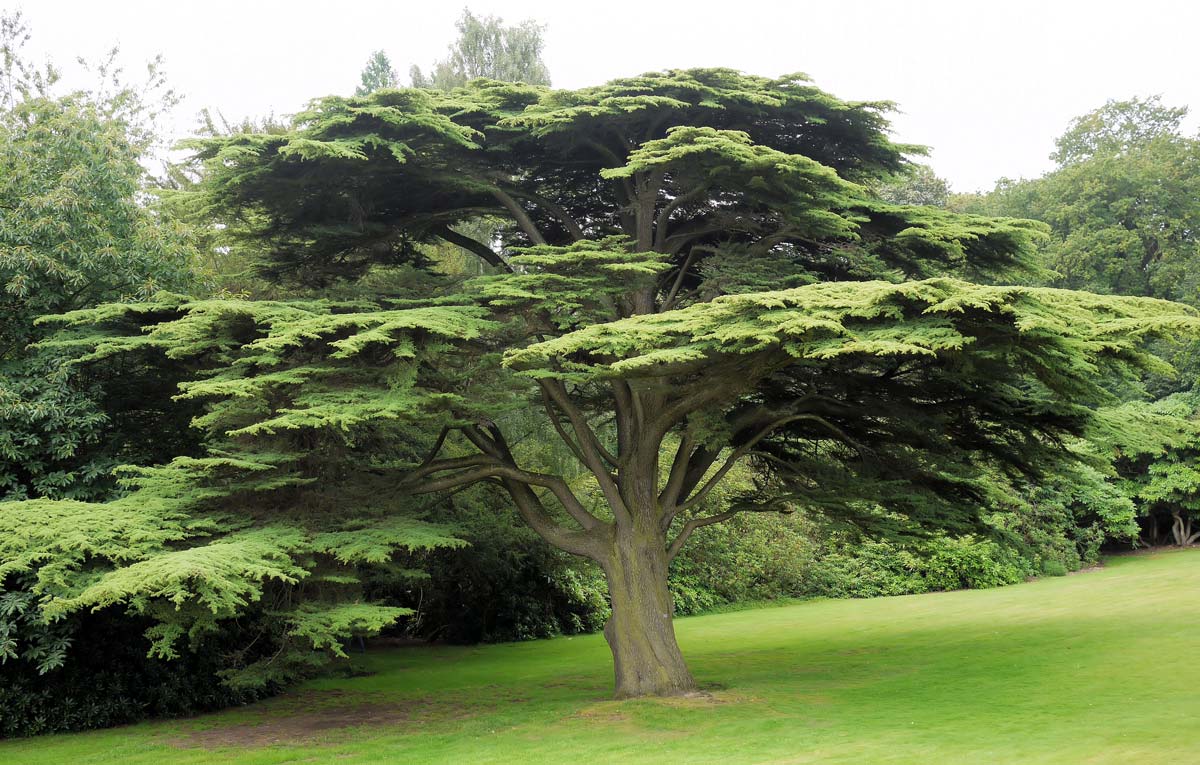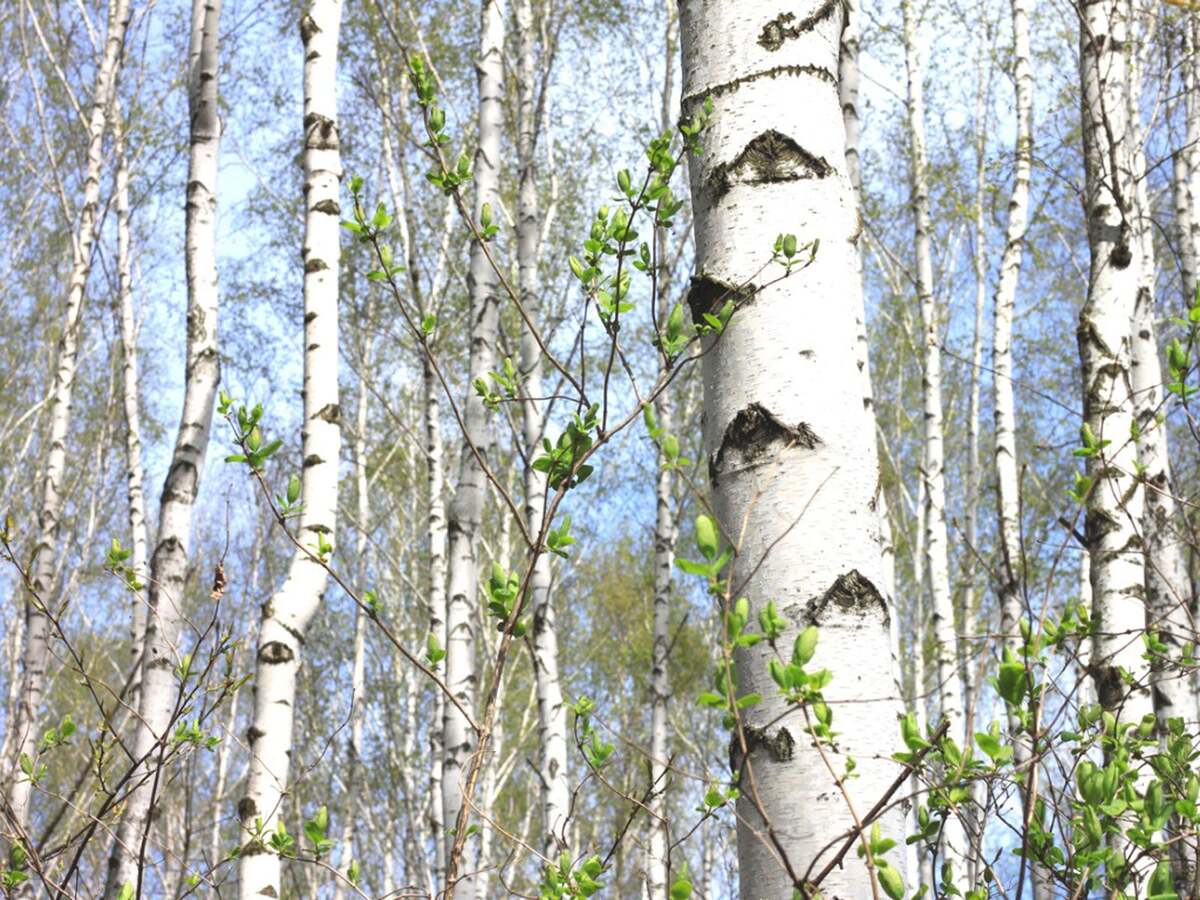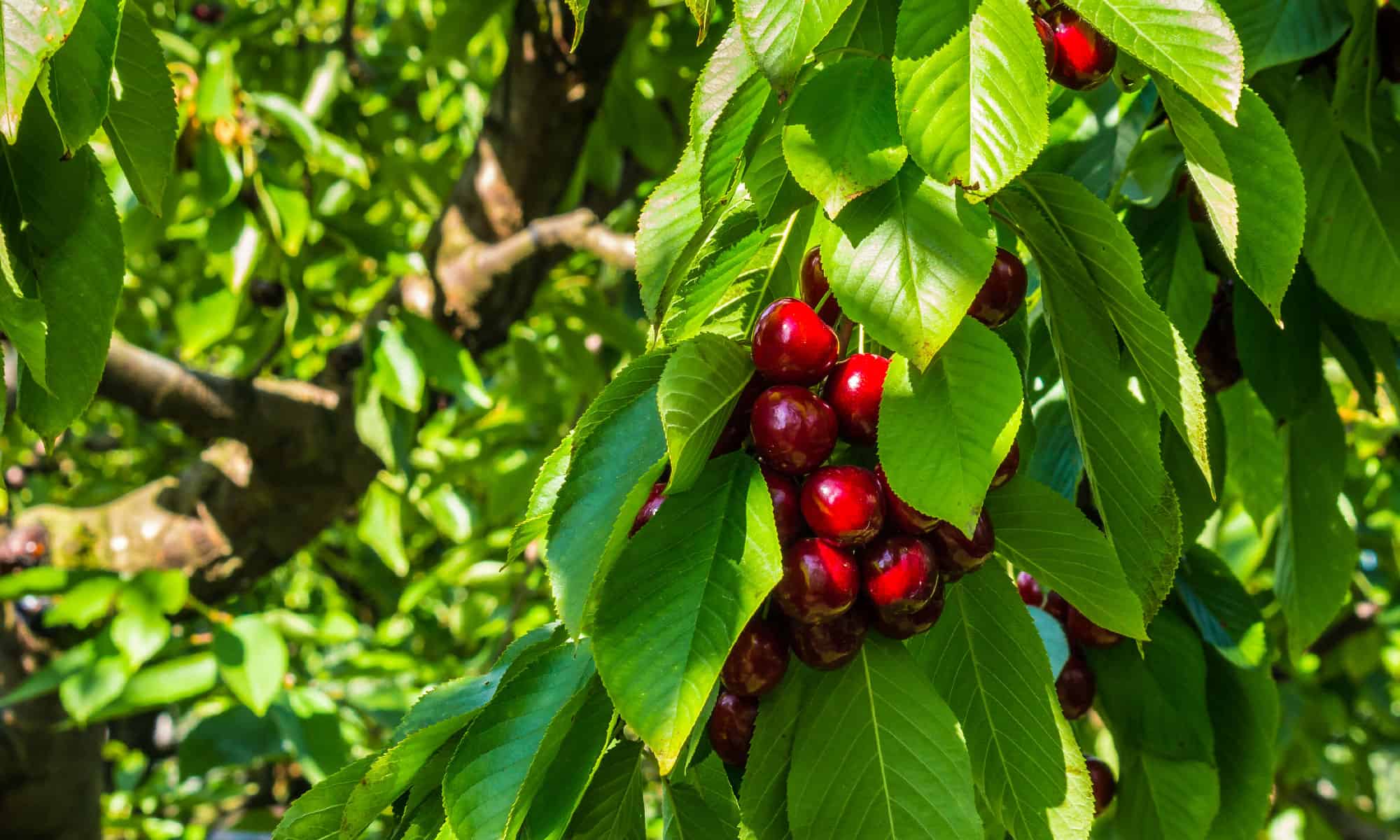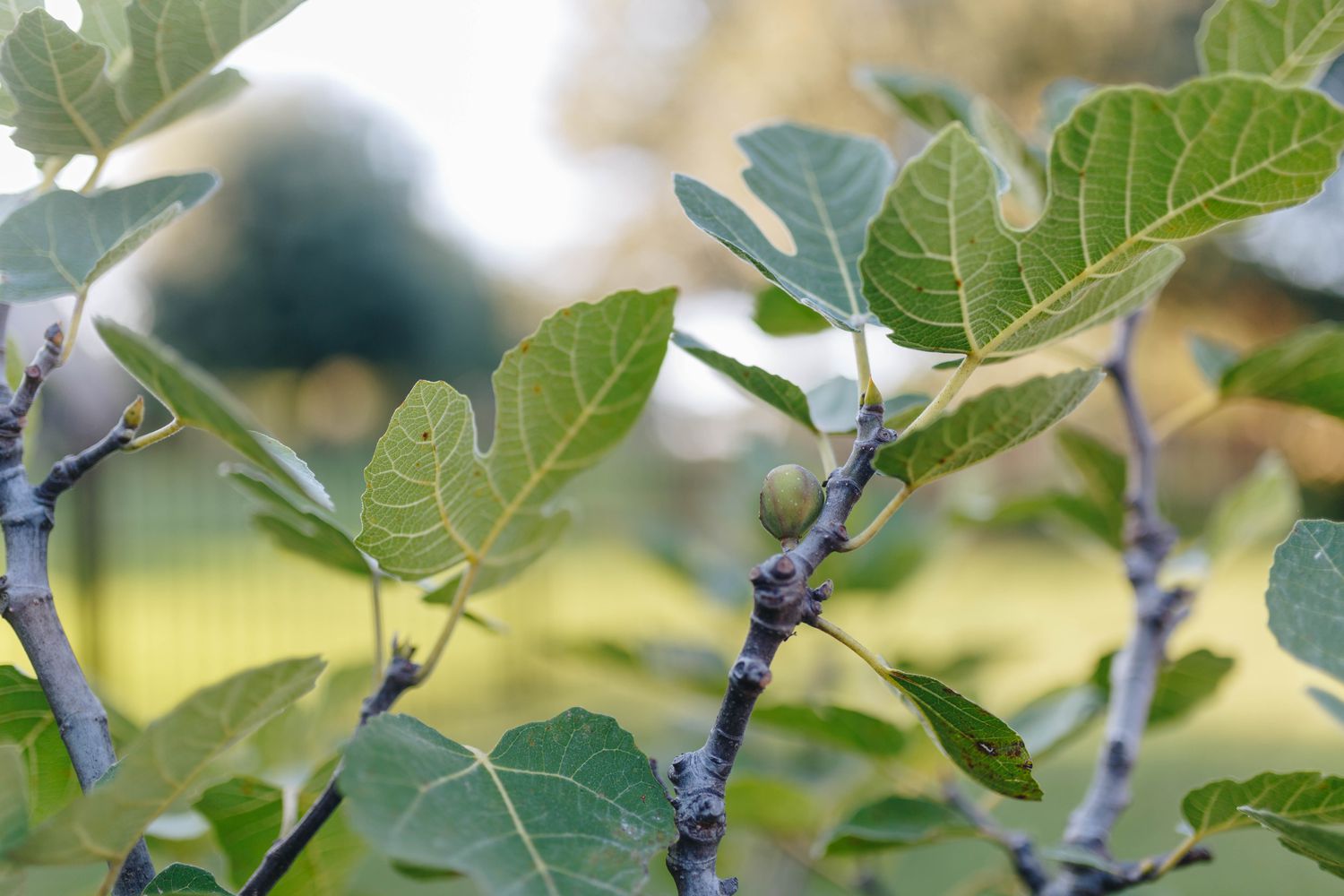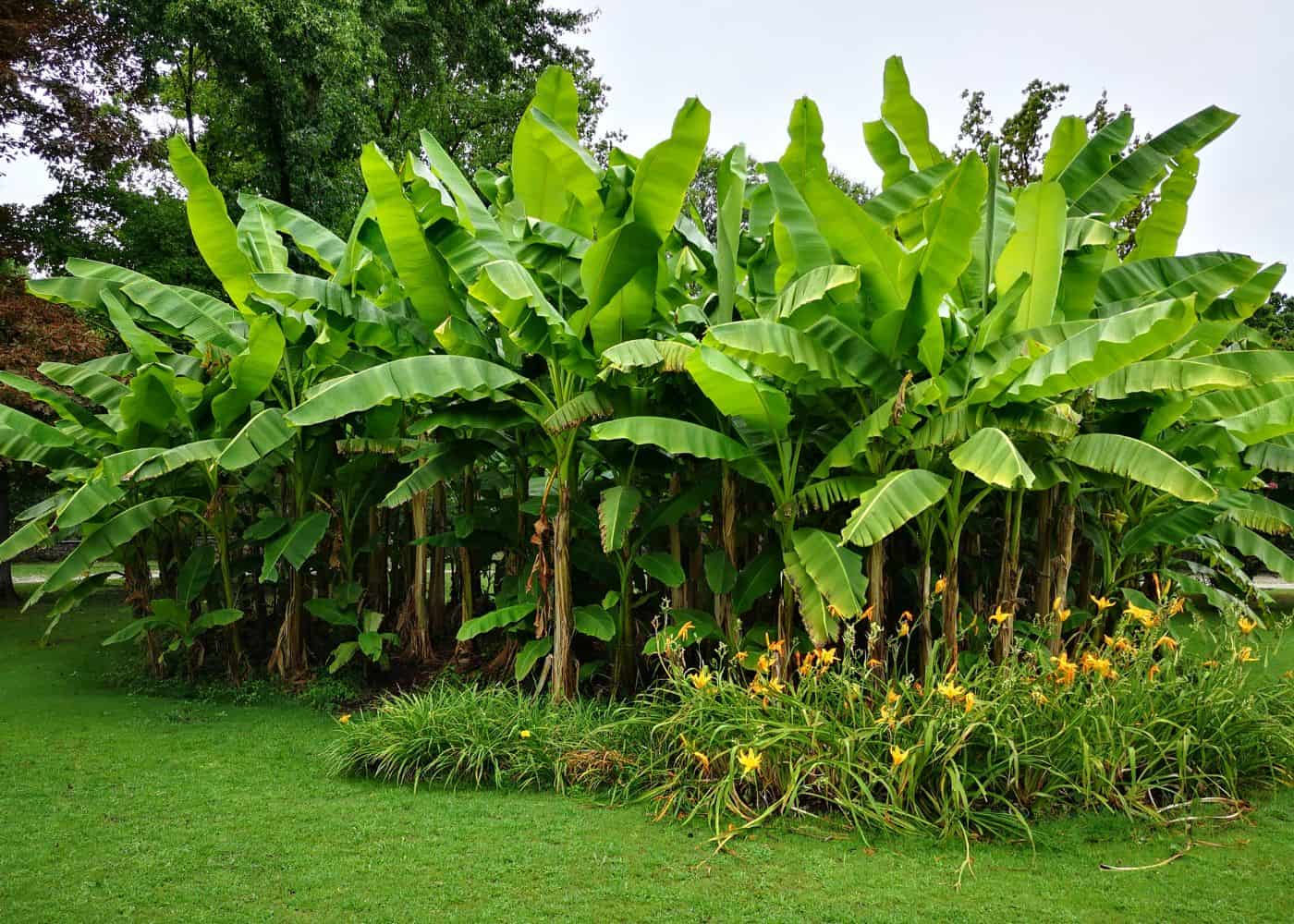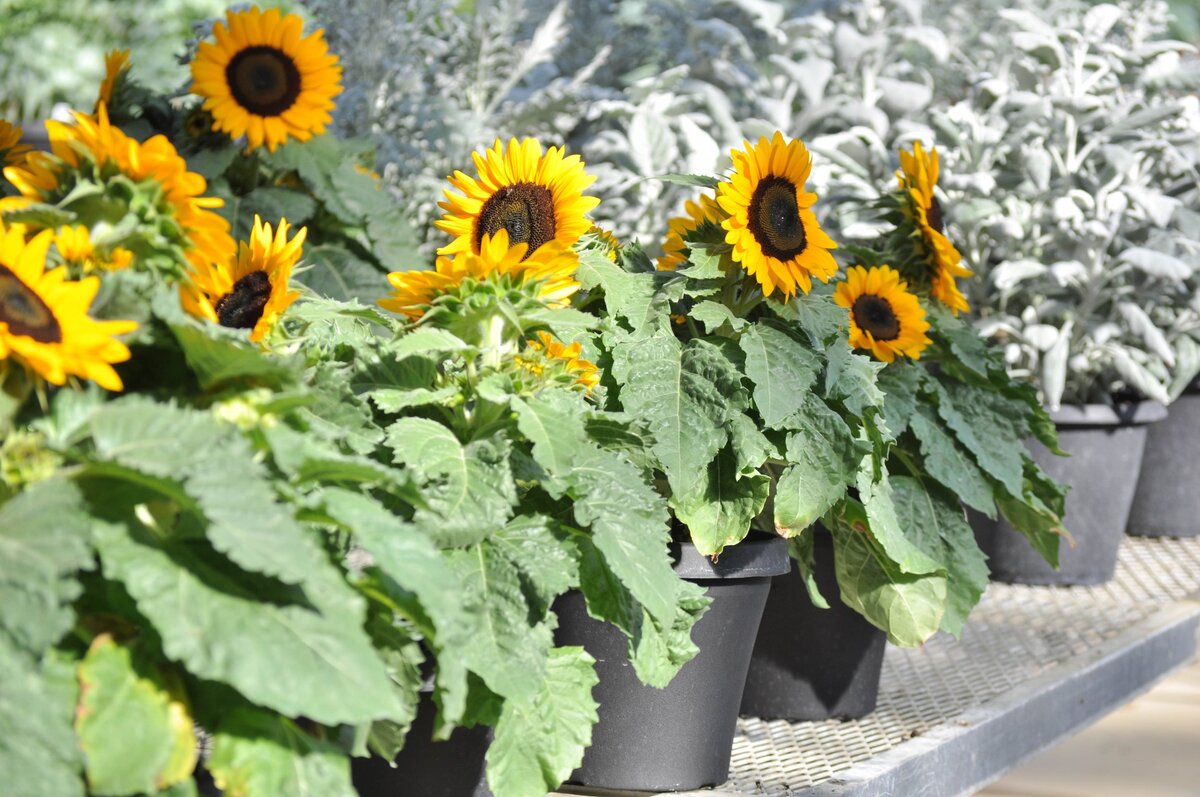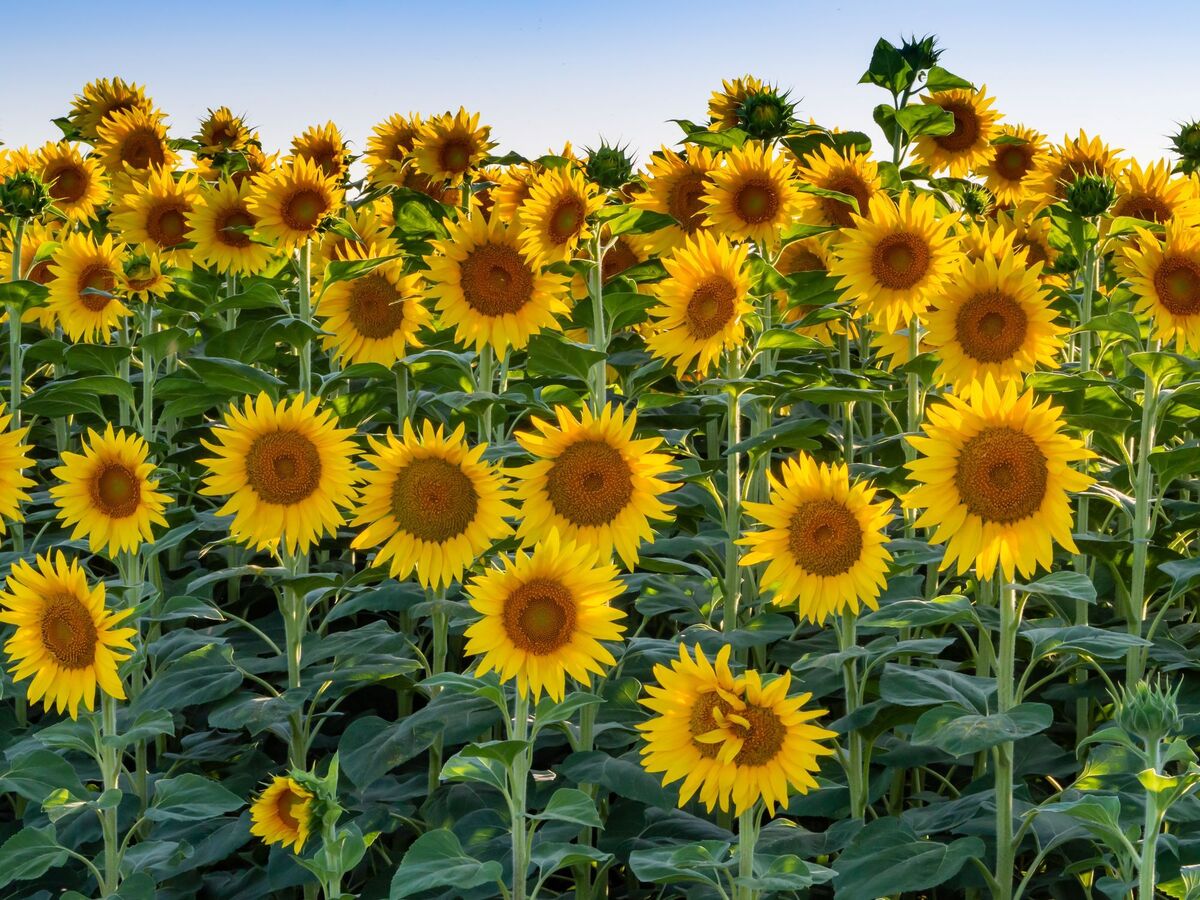Home>Gardening Techniques>Plant Care>How Tall Do Cherry Blossom Trees Grow
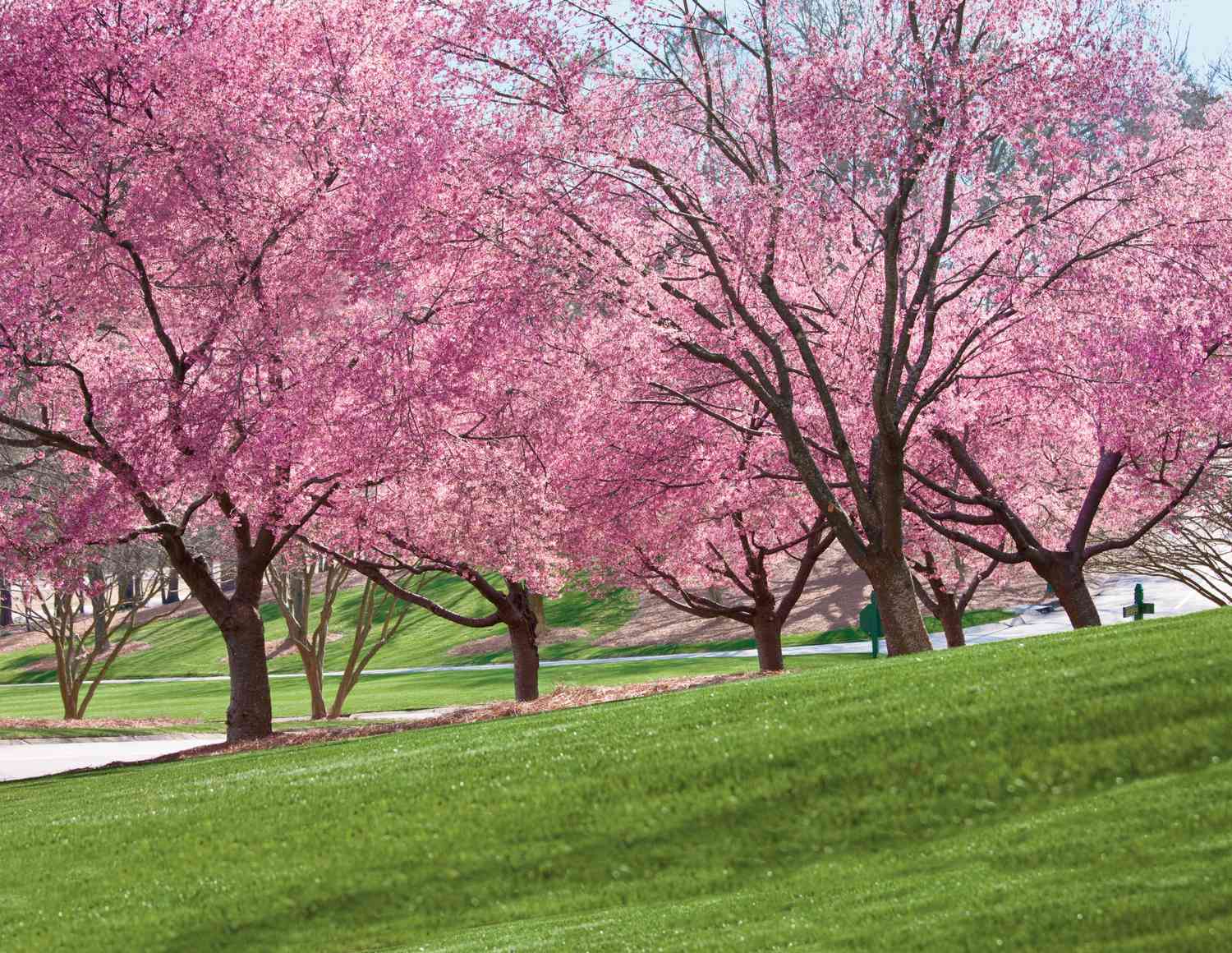

Plant Care
How Tall Do Cherry Blossom Trees Grow
Modified: January 22, 2024
Discover the optimal plant care techniques for cherry blossom trees, including how tall they can grow. Enhance your gardening skills and ensure your trees reach their full potential.
(Many of the links in this article redirect to a specific reviewed product. Your purchase of these products through affiliate links helps to generate commission for Chicagolandgardening.com, at no extra cost. Learn more)
Table of Contents
- Introduction
- Appearance of Cherry Blossom Trees
- Growth Patterns of Cherry Blossom Trees
- Optimal Growing Conditions for Cherry Blossom Trees
- Factors Affecting the Height of Cherry Blossom Trees
- Average Height of Cherry Blossom Trees
- Famous Cherry Blossom Trees and Their Heights
- Pruning Techniques for Maintaining Height of Cherry Blossom Trees
- Conclusion
Introduction
Welcome to the enchanting world of cherry blossom trees! These iconic trees have captured the hearts of people around the globe with their delicate beauty and ephemeral nature. Whether you’re an avid gardener or simply fascinated by nature’s wonders, understanding the growth patterns and optimal care for cherry blossom trees is essential for their successful cultivation.
Cherry blossom trees, also known as sakura trees, are native to several regions in Asia, particularly Japan, where they hold profound cultural significance. Each spring, these trees burst into a breathtaking display of vibrant pink and white blossoms, attracting millions of visitors who gather to witness the magical spectacle.
The appearance of cherry blossom trees is truly a sight to behold. Their flowers, known as sakura, are small and delicate, consisting of five petals arranged in clusters along the branches. When in full bloom, the trees create a stunning canopy of blossoms, casting a dreamlike aura over the surrounding landscape.
Understanding the growth patterns and optimal conditions for cherry blossom trees is key to ensuring their healthy development and longevity. In this article, we will explore the factors that affect the height of cherry blossom trees, the average height you can expect them to reach, famous specimens known for their impressive stature, and pruning techniques to maintain the desired height.
So, whether you’re planning to grow cherry blossom trees in your own backyard or simply wish to learn more about their fascinating growth habits, this article will provide you with all the information you need to cultivate these beautiful trees successfully.
Appearance of Cherry Blossom Trees
The beauty of cherry blossom trees lies not only in their captivating blossoms but also in their overall appearance. These trees typically have a graceful and elegant form that adds a touch of charm to any landscape.
Cherry blossom trees are deciduous, meaning they shed their leaves annually. During the winter months, the trees appear bare, showcasing their intricate branches and trunk structure. As spring approaches, the buds on these branches begin to swell, signaling the upcoming spectacle of the cherry blossoms.
When the blossoms finally emerge, they create a breathtaking display of color, transforming the tree into a vision of ethereal beauty. The flowers are usually small and dainty, measuring around one to two inches in diameter. They come in various shades of pink and white, depending on the specific species or cultivar.
The petals of cherry blossoms are arranged in clusters along the branches, forming large, fluffy clusters of flowers. This cluster effect enhances the visual impact when the tree is in full bloom, as it appears as if the entire tree is adorned with a soft, billowy cloud of blossoms.
Beyond their gorgeous flowers, cherry blossom trees have other notable features. The bark of mature trees often develops a distinctive reddish-brown hue, adding visual interest even when the tree is not in bloom. The leaves of cherry blossom trees are typically medium to dark green and turn vibrant shades of yellow, orange, or red in the autumn, providing a stunning farewell before winter sets in.
Cherry blossom trees have a relatively small to medium size, making them suitable for various landscape settings. Their compact and rounded form lends itself well to both urban gardens and larger open spaces. Overall, their appearance exudes charm and elegance, making them a popular choice among nature enthusiasts and gardeners alike.
Growth Patterns of Cherry Blossom Trees
Understanding the growth patterns of cherry blossom trees is essential for their successful cultivation and care. These trees follow a distinct growth cycle that influences their height, spread, and overall shape.
Cherry blossom trees typically start their growth cycle in the spring when they produce new leaves and develop flower buds. The blossoms then emerge, covering the branches in a dazzling display of color. This is the peak season for cherry blossom trees, attracting visitors from all over the world to witness their ephemeral beauty.
After the blossoms have faded and fallen, cherry blossom trees continue to grow throughout the summer months. The focus during this time is on leaf production and increasing the tree’s overall vigor. The leaves play a vital role in providing energy to the tree through photosynthesis, allowing it to store essential nutrients and prepare for the following year’s growth.
In the fall, as the temperatures begin to cool, cherry blossom trees enter a period of dormancy. The leaves start changing color and eventually drop, marking the end of the active growth season. During this time, the tree conserves energy and prepares itself for the colder months ahead.
The growth patterns of cherry blossom trees are influenced by various factors, including genetics, environmental conditions, and proper care. These trees have a moderate growth rate, usually reaching their full height in about 10 to 20 years. However, it’s important to note that different species and cultivars may have varying growth rates and ultimate sizes.
When it comes to their shape, cherry blossom trees have a natural tendency to develop a rounded or vase-like form. This shape enhances the overall aesthetic appeal of the tree and allows the branches to support the weight of the blossoms during peak bloom. However, with proper pruning, the shape of the tree can be adjusted to fit specific preferences or space limitations.
To ensure healthy growth, cherry blossom trees require adequate sunlight, well-drained soil, and regular watering. They are adaptable to different soil types but thrive best in fertile, slightly acidic soil. Providing proper care and maintenance will promote vigorous growth and abundant blooms, allowing you to enjoy the beauty of cherry blossoms for years to come.
Optimal Growing Conditions for Cherry Blossom Trees
To cultivate healthy and thriving cherry blossom trees, it is crucial to provide them with the optimal growing conditions. These beautiful trees have specific requirements that, when met, ensure their successful establishment and growth.
Sunlight is one of the most critical factors in the growth and development of cherry blossom trees. They thrive in full sunlight, so it is important to choose a planting location that receives at least six hours of direct sunlight each day. Insufficient sunlight can result in weak growth, fewer blossoms, and increased susceptibility to pests and diseases.
Equally important is the soil quality. Cherry blossom trees prefer well-drained soil that is rich in organic matter. The soil should ideally be slightly acidic with a pH level between 6.0 and 6.5. If the soil in your area is heavy clay or compacted, consider improving the drainage by incorporating compost or organic matter into the soil before planting.
Adequate water is essential for the healthy growth of cherry blossom trees, especially during the initial stages and dry periods. While they do not tolerate waterlogged conditions, they do require consistent moisture. Water the tree deeply once or twice a week, providing enough water to moisten the soil to a depth of at least 6 inches. Avoid overwatering, as this can lead to root rot and other fungal diseases.
Temperature is another crucial aspect to consider. Cherry blossom trees generally thrive in regions with a distinct change in seasons, where they can experience a period of cold dormancy. However, some cultivars are more tolerant of warmer climates. Before planting, research the specific variety and ensure it is suitable for your local climate.
In addition to the environmental conditions, proper care and maintenance are essential for the optimal growth of cherry blossom trees. Regular pruning will help maintain the tree’s shape, improve airflow, and prevent the development of weak or crossing branches. Pruning is best done during the dormant season, after the blossoms have faded.
Fertilizing cherry blossom trees can also contribute to their overall health and growth. Apply a balanced, slow-release fertilizer in early spring, following the manufacturer’s instructions. Avoid high nitrogen fertilizers, as they can promote excessive leaf growth at the expense of flower production.
By providing the optimal growing conditions, you can ensure that your cherry blossom trees flourish and produce an abundance of breathtaking blossoms each spring. With proper care and attention, these stunning trees will become a highlight of your garden and a source of joy and admiration for years to come.
Factors Affecting the Height of Cherry Blossom Trees
The height of cherry blossom trees can vary depending on several factors. Understanding these factors will help you manage the growth of your cherry blossom trees and ensure they reach their optimal height.
Genetics play a significant role in determining how tall a cherry blossom tree can grow. Different species and cultivars have varying growth patterns and ultimate sizes. Some varieties naturally have a smaller stature, while others can grow taller. When selecting cherry blossom trees for your garden, consider the expected height of the specific cultivar.
Another crucial factor is the age of the tree. Like many trees, cherry blossom trees have a growth period during which they reach their full height. Younger trees tend to grow more rapidly and can achieve their mature height within a shorter time frame. As the tree ages, its growth rate slows down, and it eventually reaches its maximum potential height.
Environmental conditions significantly impact the height of cherry blossom trees. Adequate sunlight is essential for optimal growth. Trees planted in shaded areas may not reach their full height due to competition for light. Similarly, trees planted in wind-prone locations may experience stunted growth as strong winds can inhibit their upward growth.
Soil quality and nutrient availability also affect the height of cherry blossom trees. Trees planted in nutrient-rich soil will generally grow taller and healthier compared to those planted in poor-quality soil. Soil pH plays a role as well, with cherry blossom trees preferring slightly acidic soil for optimal growth.
Water availability is crucial for tree growth, and cherry blossom trees are no exception. Insufficient water can stunt their height, while excessive watering can lead to root rot and other issues. Consistent and deep watering, especially during dry periods, is necessary to promote healthy growth and achieve maximum height.
Proper pruning can also impact the height of cherry blossom trees. Regular pruning helps shape the tree, remove diseased or damaged branches, and improve overall tree health. Controlling the spread of the tree through selective pruning can also indirectly affect its height.
It’s important to note that while you can influence the height of cherry blossom trees to some extent, they do have a genetically determined height range. Understanding the factors that affect their growth can help you create an environment conducive to their healthy development and maximize their potential height.
Average Height of Cherry Blossom Trees
The average height of cherry blossom trees can vary depending on the species, cultivar, and growing conditions. As with many trees, cherry blossom trees have a range of heights that they can reach during their lifetime.
Typically, most cherry blossom trees reach a height of around 20 to 40 feet (6 to 12 meters) at maturity. However, it’s important to note that there are some species and cultivars that can grow taller, reaching heights of up to 60 feet (18 meters) or more.
Some factors that can influence the average height of cherry blossom trees include genetics, environmental conditions, and proper care. Different species and cultivars have different growth patterns and ultimate sizes, so it’s important to research the specific variety you are planting to determine its expected height.
Environmental conditions also play a role in determining the average height of cherry blossom trees. Trees planted in areas with abundant sunlight and optimal soil conditions tend to reach their maximum height potential. On the other hand, trees in shaded or restricted growing conditions may not grow as tall.
Proper care and maintenance can also affect the average height of cherry blossom trees. Regular pruning can help shape the tree and control its upward growth. Additionally, providing adequate water, nutrients, and protection from pests and diseases can contribute to the tree’s overall health and growth potential.
Keep in mind that these are average heights, and individual cherry blossom trees may deviate from this range. In some cases, trees may grow taller or stay shorter based on a combination of genetic factors, environmental conditions, and care practices.
The average height of cherry blossom trees makes them suitable for various landscape settings. Their moderate size allows them to be planted in urban gardens, parks, and even smaller backyard spaces. Their elegance and beauty can enhance any landscape and provide a stunning focal point.
Whether you prefer smaller or taller cherry blossom trees, understanding the average height range can help you select the right cultivar and create a garden design that complements their growth. By providing the proper growing conditions and care, you can maximize the potential height of your cherry blossom trees and enjoy their beautiful presence for years to come.
Famous Cherry Blossom Trees and Their Heights
Throughout history, certain cherry blossom trees have become famous for their exceptional beauty and impressive heights. These iconic trees have captured the attention and admiration of people from around the world. Here are a few renowned cherry blossom trees and their noteworthy heights:
- 1. Jindai-zakura: Located in Yamanashi, Japan, the Jindai-zakura cherry blossom tree holds the Guinness World Record for being the oldest cherry tree in the world. Despite its age, this magnificent tree reaches a remarkable height of 13 meters (43 feet) and is estimated to be over 2,000 years old.
- 2. Weeping Cherry of Miharu: The Weeping Cherry of Miharu, located in Fukushima, Japan, is an awe-inspiring sight. This ancient tree, estimated to be over 1,000 years old, stands at a towering height of approximately 12 meters (40 feet) and is particularly famous for its graceful weeping branches.
- 3. Aoba-zakura: The Aoba-zakura cherry tree in Sendai, Japan, is renowned for its historical significance and impressive height. Believed to be over 400 years old, this majestic tree stands at an estimated height of 10 meters (33 feet) and is beloved for its breathtaking blossoms.
- 4. Yoshino Cherry Tree: The Yoshino cherry tree, a popular variety in Japan and around the world, is known for its stunning display of pale pink blossoms. While individual trees can vary in height, they typically reach an average height of 9 to 12 meters (30 to 40 feet), creating a magnificent spectacle when planted in groups.
- 5. Kwanzan Cherry Tree: The Kwanzan cherry tree is another beloved cultivar known for its beautiful double-pink blossoms. These trees can reach heights of 6 to 9 meters (20 to 30 feet) and are particularly famous for creating a breathtaking floral display across various parks and gardens, including in Washington, D.C., during the National Cherry Blossom Festival.
These famous cherry blossom trees not only showcase the natural beauty of these remarkable trees but also highlight the different heights that can be achieved within the species and cultivars. Whether towering ancient trees or stunning cultivars known for their ornamental value, these cherry blossom trees continue to inspire and captivate people worldwide.
Visiting these famous cherry blossom trees allows one to witness the true majesty and grandeur of these natural wonders. Their impressive heights serve as a testament to their longevity, cultural significance, and enduring beauty.
Pruning Techniques for Maintaining Height of Cherry Blossom Trees
Pruning plays a vital role in maintaining the height and shape of cherry blossom trees. By employing proper pruning techniques, you can control the growth and ensure that your trees remain at a desired height. Here are some key pruning techniques to consider:
1. Selective Branch Pruning: Regularly inspect your cherry blossom tree for any branches that are crossing, rubbing, or growing in undesirable directions. With clean pruning shears, carefully remove these branches to maintain a well-balanced and aesthetically pleasing shape. Removing upright branches that compete for dominance can also help regulate vertical growth.
2. Crown Thinning: To maintain the height and structure of the tree, consider crown thinning. This technique involves selectively removing some of the inner branches and foliage to increase airflow and light penetration throughout the tree. By carefully thinning the crown, you can promote upward growth while still maintaining the natural shape of the tree.
3. Heading Back: Heading back is the practice of cutting back lateral branches or shoots to a specific point. This technique can effectively reduce the overall height of the tree by encouraging lateral growth rather than vertical growth. When heading back branches, make sure to cut just above a bud or lateral branch to promote healthy regrowth.
4. Maintenance Pruning: Regular maintenance pruning, particularly during the dormant season, helps control the height and shape of your cherry blossom tree. It involves removing dead, diseased, or damaged branches, as well as any water sprouts or suckers that may compromise the overall structure of the tree.
5. Timing: The best time for pruning cherry blossom trees is during late winter or early spring when the tree is still dormant. This allows the tree to heal before the active growth phase begins. Avoid pruning during the fall or late summer, as it can stimulate new growth that may be susceptible to winter damage.
Remember to always use clean and sharp pruning tools to make clean cuts and minimize the risk of introducing diseases. After pruning, monitor the tree’s growth and make any necessary adjustments during subsequent pruning sessions.
It is important to note that cherry blossom trees have their own natural growth habits and may continue to grow to their genetically determined heights despite your best efforts at pruning. However, employing these pruning techniques can help control the growth and maintain an ideal height, promoting the health and beauty of your cherry blossom trees for years to come.
Conclusion
In conclusion, cherry blossom trees are truly captivating and enchanting. Their delicate beauty, represented by the stunning display of vibrant pink and white blossoms, has earned them adoration and reverence around the world. Understanding the growth patterns, optimal growing conditions, and proper care techniques is essential for cultivating healthy and thriving cherry blossom trees.
The appearance of cherry blossom trees, with their graceful form and fluffy clusters of blossoms, adds beauty and charm to any landscape. These deciduous trees emphasize the importance of the changing seasons, showcasing their intricate branches in the winter, bursting with blossoms in the spring, and providing vibrant autumn colors before the arrival of winter.
Factors such as genetics, environmental conditions, and care practices influence the height of cherry blossom trees. While the average height ranges between 20 to 40 feet, specific species and cultivars can grow taller or shorter. Notable specimens like the Jindai-zakura and Weeping Cherry of Miharu have gained fame for their exceptional height and timeless beauty.
Owning and maintaining cherry blossom trees require providing optimal growing conditions, including ample sunlight, well-drained soil, and regular watering. Additionally, proper pruning techniques can help control height, promote a well-balanced shape, and enhance the overall health of the tree.
In the end, cherishing the beauty and magic of cherry blossom trees is an experience that goes beyond their physical presence. These trees represent a profound cultural significance and evoke a sense of wonder and admiration. May the knowledge and insights shared in this article inspire you to embark on your journey of cultivating and appreciating these exquisite trees, adding a touch of ethereal beauty to your surroundings for years to come.

